In math, on Monday we made a lot of pumpkins explode. It was a good time; we did this to figure out what connections the weight, height, circumference, diameter, internal diameter, rind thickness and rubber bands had with the pumpkin once it would explode.
Weight:
When we look at the graphed points of weights of pumpkins in relation to amount of rubber bands,
 we can notice that the trend line is heading in a positive direction. The trend is positive since those with heavier weights required less rubber bands than those with lesser weights needed more rubber bands.
we can notice that the trend line is heading in a positive direction. The trend is positive since those with heavier weights required less rubber bands than those with lesser weights needed more rubber bands.
Height:
By by looking at the graph, we can conclude that the trend line is negative. The trend is negative because those with shorter heights require less rubber bands than those with larger heights.
Circumference:
The graph for circumference, shows that there is a negative trend going on with the points. 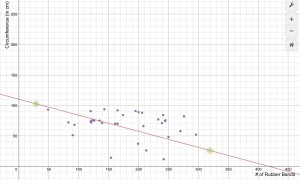 The trend is negative because as circumference gets smaller, more rubber bands are needed while those with bigger circumferences require less, smaller circumferences would need more because they didn’t stretch as far.
The trend is negative because as circumference gets smaller, more rubber bands are needed while those with bigger circumferences require less, smaller circumferences would need more because they didn’t stretch as far.
Diameter:
Looking at the graph for diameter and rubber bands, the general direction the trend is going is negative. It’s negative because those with larger circumferences need less rubber bands than the ones with smaller circumferences.
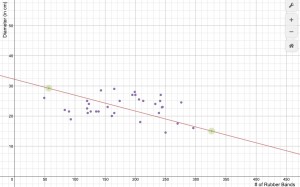 Internal Diameter:
Internal Diameter:
By looking at the graph, the general trend of the points is headed in a negative trend.
The trend is negative because those with bigger inner diameters need less rubber bands than those with smaller inner diameters to explode.
Rind Thickness:
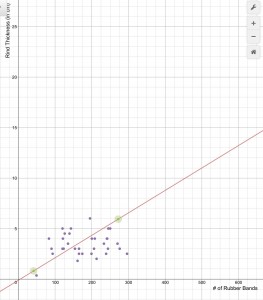
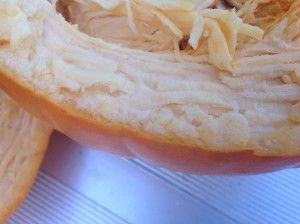 Looking at the graph we can tell that there’s a positive trend going on with the points. There’s a positive trend because those with thinner rinds had to use less rubber bands than those with thicker rinds. There needed to be more rubber bands for those with thicker thickness because there needs to be more added pressure in proportion to how thick the rind is.
Looking at the graph we can tell that there’s a positive trend going on with the points. There’s a positive trend because those with thinner rinds had to use less rubber bands than those with thicker rinds. There needed to be more rubber bands for those with thicker thickness because there needs to be more added pressure in proportion to how thick the rind is.
Rubber Band Length:
There re isn’t a big trend for this graph actually, but only in the slightest we can see a negative trend.
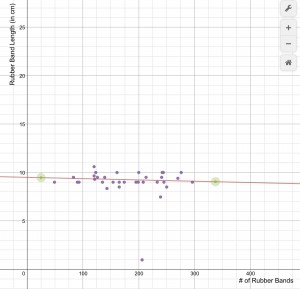 Theres a slight negative trend because those with bigger rubber bands require less than those with shorter length rubber bands to explode. There wasn’t so much of a trend for these overall.
Theres a slight negative trend because those with bigger rubber bands require less than those with shorter length rubber bands to explode. There wasn’t so much of a trend for these overall.
My prediction at the beginning of this was, the pumpkins with the thinner rinds (aka the larger pumpkins), will require less rubber bands to be able to explode/burst. I learned that there are multiple variables coming into play when getting these pumpkins to burst in comparison to how many rubber bands will be used.
Additionally, I unfortunately did not record this expierement but due to that, I put together an animation and slide show of the process of putting on rubber bands and pictures I did get.




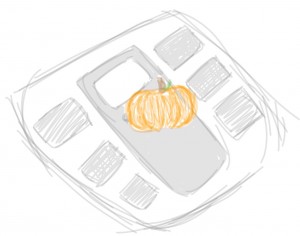
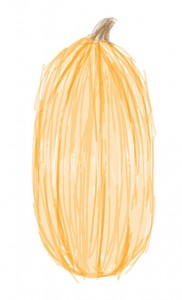
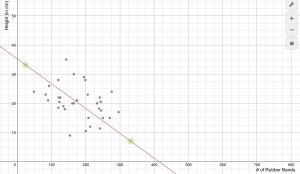
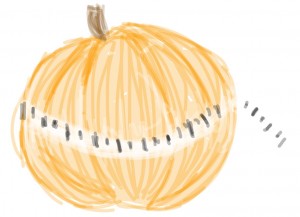
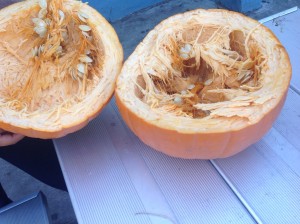
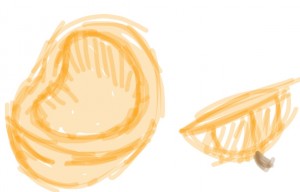
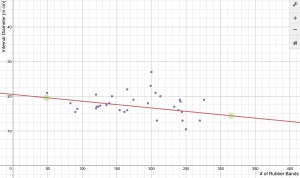
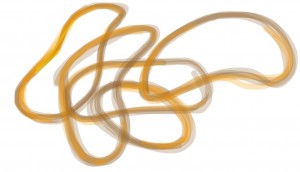
Leave a Reply